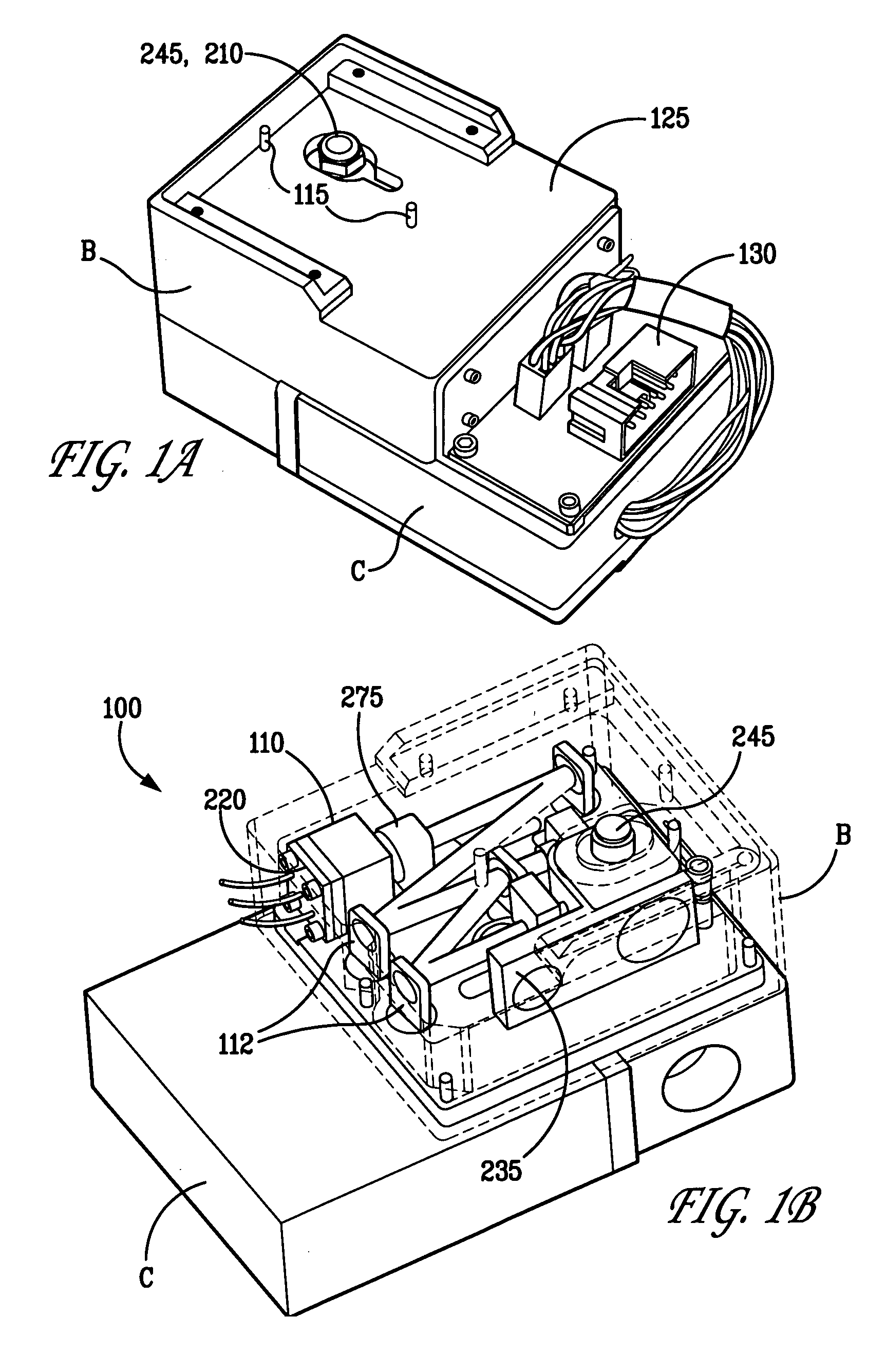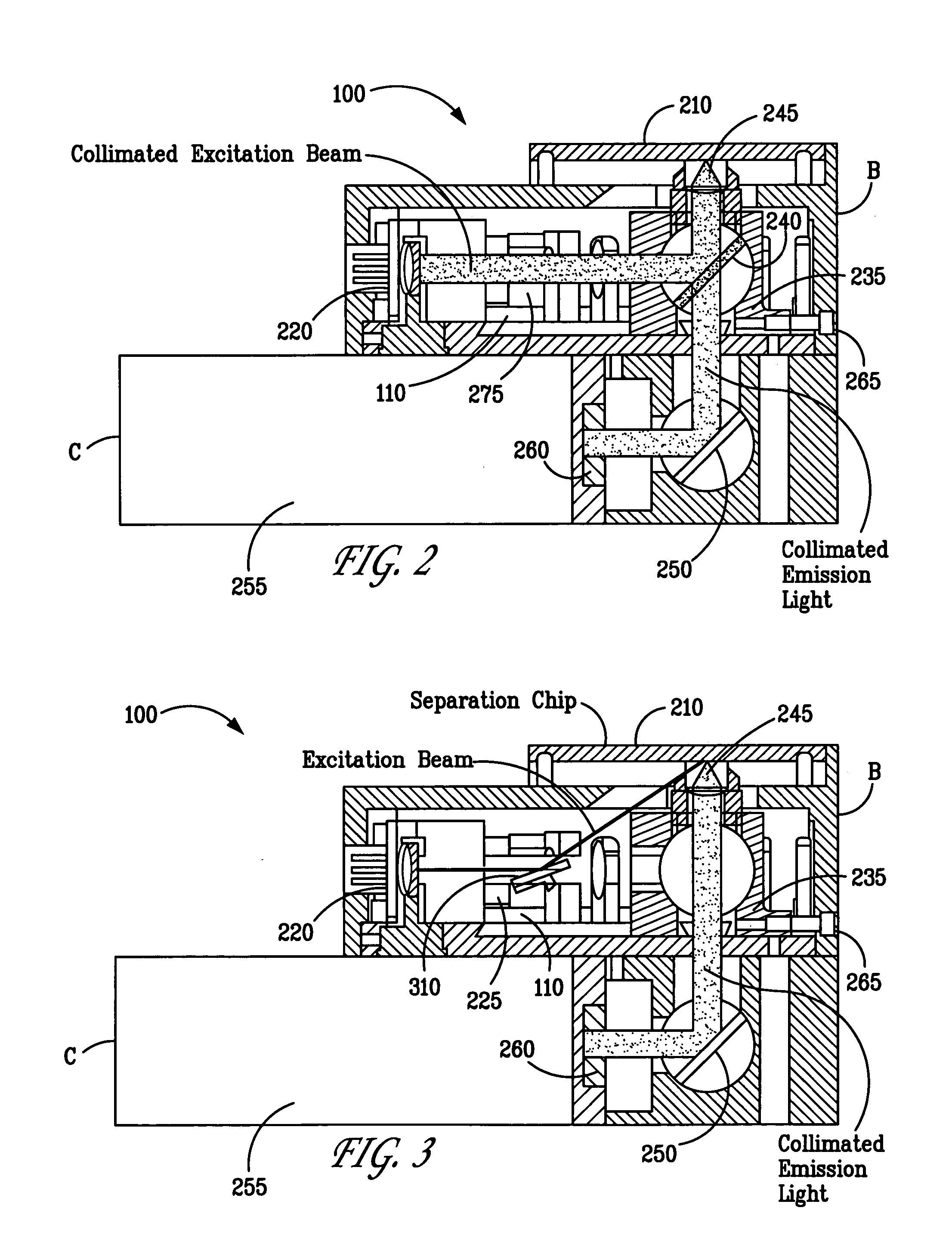Optical detector system
a detector system and optical technology, applied in the field of modules of optical detector systems, can solve the problems of reproducible detection and measurement of low concentrations of chemicals, convenient, safe and fast, etc., and achieve the effect of accurate detection and measurement of picomolar concentrations
- Summary
- Abstract
- Description
- Claims
- Application Information
AI Technical Summary
Benefits of technology
Problems solved by technology
Method used
Image
Examples
Embodiment Construction
[0020] Referring now to the drawings, FIG. 1a shows an exterior view of the optical detector system, indicated generally at 100. The optical detector system is comprised generally of two modules, optics module (B) that contains the light source and associated optical elements for generating, collimating, shaping the light beam, directing the resulting light beam onto a detection region, and collecting the resulting fluorescent radiation. Detector module (C) contains detection means for receiving and analyzing the emitted radiation. Module B is in optical communication with module C and, as illustrated in FIG. 1a can be superposed onto module C. The two-tier modular design illustrated in FIG. 1a, wherein the light source and associated optical means are combined with detection means in a unitary structure provides for isolating stray light arising from the excitation source from the detector. Moreover, the totally enclosed package excludes room light. The terms “light” and “radiation...
PUM
| Property | Measurement | Unit |
|---|---|---|
| wavelength | aaaaa | aaaaa |
| wavelength | aaaaa | aaaaa |
| area | aaaaa | aaaaa |
Abstract
Description
Claims
Application Information
 Login to View More
Login to View More - R&D
- Intellectual Property
- Life Sciences
- Materials
- Tech Scout
- Unparalleled Data Quality
- Higher Quality Content
- 60% Fewer Hallucinations
Browse by: Latest US Patents, China's latest patents, Technical Efficacy Thesaurus, Application Domain, Technology Topic, Popular Technical Reports.
© 2025 PatSnap. All rights reserved.Legal|Privacy policy|Modern Slavery Act Transparency Statement|Sitemap|About US| Contact US: help@patsnap.com



